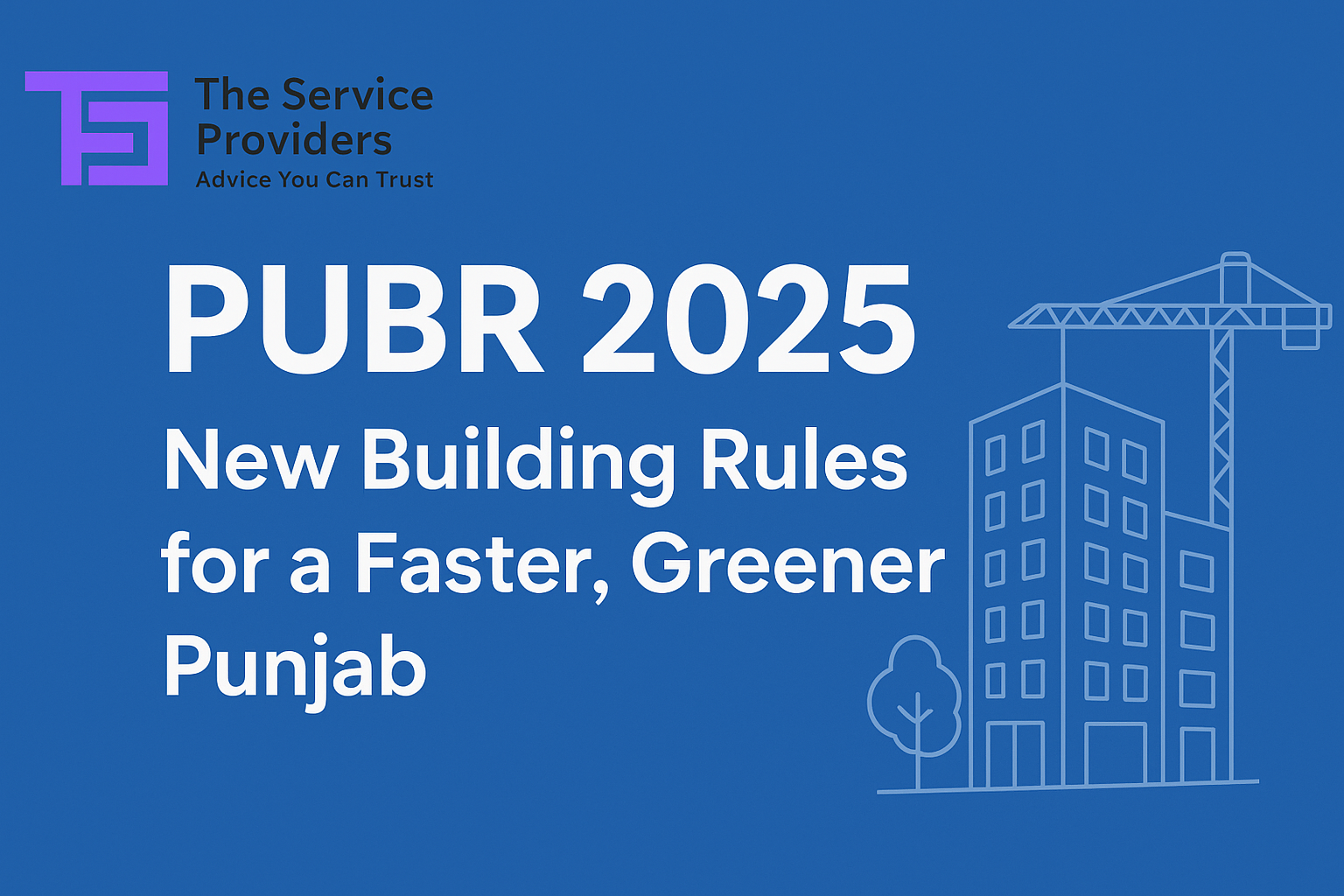
Introduction
The Punjab Government has released the Draft Punjab Unified Building Rules 2025 (PUBR 2025) — a landmark step towards standardising building regulations across all urban and rural development bodies. Issued by the Department of Housing & Urban Development (HUD), the draft aims to bring uniformity, transparency, and speed to the state’s construction approval system.
For builders, architects, and investors, this is a major regulatory shift that will directly impact building-plan approvals, developer compliance, and project timelines across Punjab.
What the New Draft Rules Propose
The PUBR 2025 is designed to replace multiple, often conflicting, local bye-laws with a single unified framework. It covers everything from plot coverage, setbacks, parking, building height, green requirements, to digital plan approval.
Key objectives include:
Unifying rules under one umbrella for all development authorities and local bodies.
Speeding up approvals through online and self-certified systems.
Promoting green, safe, and accessible building practices.
Simplifying regulations to boost investor confidence and ease of doing business.
Key Highlights of the Draft Rules
 Simplified & Digital Approval Process
Simplified & Digital Approval Process
The draft introduces online submission and self-certification of building plans for certain project categories.
Registered architects and structural engineers can self-certify drawings, reducing dependency on lengthy manual approvals.
The aim is to cut down bureaucratic delays and enable faster project initiation.
 Unified Bye-laws Across Authorities
Unified Bye-laws Across Authorities
The same building norms will now apply to projects under GMADA, PUDA, GLADA, JDA, Municipal Corporations, and other local bodies.
This brings long-awaited consistency for developers who operate across multiple jurisdictions in Punjab.
 FAR & Height Relaxations
FAR & Height Relaxations
The draft proposes higher Floor Area Ratios (FAR) and greater height limits, especially for green buildings and wider-road projects.
For example, residential plots on roads of 12 m (40 ft) or more can be built as stilt + 4 floors, aligning Punjab with neighbouring Haryana’s model.
 Green & Sustainable Construction
Green & Sustainable Construction
Incentives are proposed for projects that obtain Green Building Certification.
However, these certifications must be maintained — if a project loses its green rating later, it could face penalties.
Rooftop solar installations and rainwater harvesting systems will be mandatory for specified plot sizes.
 Accessibility & Safety Provisions
Accessibility & Safety Provisions
Mandatory ramps, lifts, and accessible toilets for differently-abled users in public buildings.
Updated fire safety norms for high-rise and mixed-use buildings.
Encouragement for EV charging infrastructure in large residential and commercial complexes.
Impact on Developers & Architects
 Faster Approvals, Fewer Delays
Faster Approvals, Fewer Delays
Developers can expect shorter approval cycles as more categories shift to online and self-certified modes. This will reduce the time between land acquisition and construction commencement.
 More Design Flexibility
More Design Flexibility
With relaxed FAR and building height norms, developers can make better use of land — improving profitability without compromising on compliance.
 Greater Professional Accountability
Greater Professional Accountability
Since architects and engineers will self-certify plans, responsibility and liability for errors or misrepresentation will increase. Professionals must ensure structural and safety accuracy before submission.
 New Compliance Requirements
New Compliance Requirements
Green certification maintenance, solar installation, and accessibility provisions mean new documentation and inspection layers. Non-compliance could invite penalties or loss of occupancy certificates.
Industry Response
While developers have largely welcomed the move, public feedback has been mixed.
Some experts have praised the focus on digitisation and uniformity.
Others have raised concerns about allowing high-rise construction on narrow roads, lack of infrastructure upgrades, and insufficient environmental checks.
Public objections have already been submitted by several civic and professional groups — the government has promised to review suggestions before final notification.
What Developers Should Do Now
Review the Draft: The draft rules are available on GMADA’s official website. Study how your projects fit into the new FAR, height, and parking norms.
Submit Suggestions: Stakeholders can still share feedback with the Housing Department before the final version is notified.
Update Designs & Checklists: Align your project drawings, building-plan templates, and compliance documentation with the new draft requirements.
Prepare for Self-Certification: Train your architects and engineers for new self-certification responsibilities.
Plan for Green Compliance: Invest in sustainable design features to qualify for incentives and avoid penalties.
How The Service Providers Can Help
At The Service Providers, we assist clients across Punjab in obtaining CLU, building plan approvals, layout licenses, and NOCs.
With the Draft Punjab Unified Building Rules 2025 coming into effect soon, our expert team can help you:
Interpret how the new norms affect your ongoing or upcoming projects.
Prepare updated building-plan applications under the new format.
Guide your architects/engineers through the self-certification process.
Ensure compliance with green, solar, and accessibility standards.
Liaise with authorities for smooth transition to the new system.
Conclusion
The Punjab Unified Building Rules 2025 mark a major policy milestone for the state’s urban development framework. They promise speed, uniformity, and transparency — but also demand higher accountability and compliance readiness.
For developers, architects, and investors, the message is clear:
Adapt early, align your processes, and turn this regulatory change into a growth opportunity.
Stay tuned to TheServiceProviders.in for the latest updates, policy interpretations, and practical guidance on Punjab’s evolving real-estate landscape.

Add a Comment